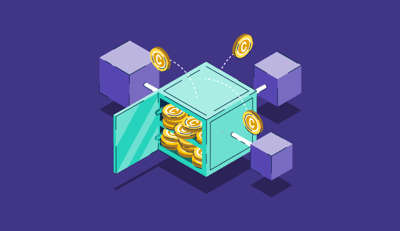July 9, 2025
 by Alyssa Towns / July 9, 2025
by Alyssa Towns / July 9, 2025

I’ll admit it. When I first started looking into cryptocurrency, I thought it was just Bitcoin and maybe a handful of other coins I’d heard about in the news. But once I began exploring where to invest, I realized there are thousands of cryptocurrencies out there, each claiming to solve a different problem or reinvent how money works.
If you are also in the same boat, trying to untangle the difference between coins, tokens, altcoins, and stablecoins, or wondering whether Dogecoin is serious business or just an elaborate meme, you’re in the right place.
The five main types of cryptocurrencies include payment coins like Bitcoin, utility tokens like Ethereum, stablecoins pegged to fiat currencies like USDC, security tokens representing ownership in assets, and privacy coins like Monero. Each type serves a distinct purpose in the digital economy.
In this guide, I'll break down the main types of cryptocurrency, explain their pros and cons, and share real examples, from Bitcoin and Ethereum to NFTs and stablecoins pegged to the dollar.
Whether you’re investing via a cryptocurrency exchange, building dApps, or simply crypto-curious, you’ll leave with a clear picture of what makes each type unique and why it all matters in 2025.
Disclaimer: This article is for informational purposes only and does not constitute financial, investment, or legal advice. Cryptocurrency involves significant risk, and you should always do your own research or consult with a qualified professional before making investment decisions.
Today, thousands of cryptocurrencies are available, with a recent Forbes Advisor article citing over 22,000. When most people think about cryptocurrency, they picture Bitcoin or maybe Ethereum. But in reality, the crypto universe is much bigger and a lot more nuanced.
At a high level, you can think of cryptocurrencies as falling into four main categories:
If you’ve ever felt confused about how coins, tokens, and altcoins overlap, you’re not alone. The lines can get blurry. But this framework will help you quickly figure out where a cryptocurrency fits and what it’s designed to do.
| Category | Definition | Runs on its own blockchain? | Common use cases | Examples |
| Coins | Native digital currencies operate on their own chain. | Yes | Payments, store of value | Bitcoin, Litecoin |
| Tokens | Assets built on existing blockchains. | No | Access to services, governance, assets | Chainlink, Uniswaps, NFTs |
| Stablecoins | Cryptocurrencies pegged to stable assets like fiat. | Varies | Payments with less volatility | Tether, USDC |
| Altcoins | All cryptocurrencies other than Bitcoin. | Some do, some don't | Various: payments, smart contracts | Ethereum, Solana |
Below, each category of these cryptocurrencies are explained in detail.
Coins are digital currencies that can operate on their own independent blockchain. For example, BTC and ETH each have their respective blockchains. Similar to traditional currencies, these coins also store value.
They were the first form of cryptocurrency, designed primarily to act as money you can send, receive, or store without relying on a bank or central authority. They are fungible, portable, and limited in supply, making them comparable to physical forms of medium exchange.
In other words, if a cryptocurrency operates on its own blockchain and has value primarily as a currency or utility token within that network, it’s considered a coin.
People who participate in cryptocurrency networks use coins as a primary form of digital money to buy goods and services and to transfer value amongst each other. In addition to coins with fluctuating value, stablecoins in cryptocurrency exist to provide a less risky option.
Each coin has its own blockchain, a decentralized ledger where transactions are recorded, verified, and secured through cryptography. Coins typically have these characteristics:
While the original idea was digital cash, many coins have evolved into ecosystems with smart contracts, decentralized apps, and additional functionality.
Before investing in coins, consider:
Coins are often the first stop for new investors because they’re easier to research and typically have more established track records. However, they still carry risk, and it’s essential to understand how each blockchain operates before you buy in.
Here are some of the most widely recognized cryptocurrencies that operate as coins. Each of these runs on its own blockchain, has a large user base, and plays a major role in shaping the crypto market today.
Note: All the prices and market capitalization data are from Coinmarketcap.com. Cryptocurrency prices are highly volatile. These figures reflect data as of July 14, 2025, and may have changed significantly since. Also, Tether is the fourth-largest cryptocurrency based on market capitalization, but is included under the stablecoins section since it is pegged against US dollars.
Bitcoin is undeniably one of the most well-known names in crypto. An anonymous person or group of people named Satoshi Nakamoto created BTC in 2009, and it was the first cryptocurrency available. BTC operates without governing authorities and instead uses peer-to-peer transfers on a blockchain, a secure, distributed ledger.
Price: $120,195.80
Market capitalization: $2.3 trillion
Programmer Vitalik Buterin created Ethereum in 2013 and launched it in 2015. Ethereum is a blockchain, and Ether is the name of the native cryptocurrency on the Ethereum network. It is used to pay transaction fees, incentivize network validators, and serve as a store of value within the Ethereum ecosystem.
Price: $3,021.2
Market capitalization: $364 billion
David Schwartz, Jed McCaleb, and Arthur Britto developed and launched the XRP Ledger in 2011 and 2012. XRP is an open-source cryptocurrency that operates on the XRP Ledger (XRPL). A key distinguishing aspect between XRP and other cryptocurrencies is that XRP is pre-mined with a maximum supply of 100 billion tokens.
Businesses and developers use the XRP Ledger to create solutions and use cases across industries, including infrastructure, developer tooling, gaming, payments, sustainability, and more.
Price: $2.97
Market capitalization: $176 billion
Changpeng Zhao (CZ) launched Binance Coin (BNB) in 2017. It is a cryptocurrency people can trade on Binance, one of the largest crypto exchanges in the world. The Binance blockchain is built on Ethereum and uses BNB as its native token. It was initially created as a token for discounted trading fees but has since expanded into paying transaction fees on Binance.com.
Some people also use it for payments, to book travel accommodations, or to exchange for other forms of cryptocurrency.
Price: $693.38
Market capitalization: $96.5 billion
Did you know? On Alternative Airlines, you can pay over 600 airlines using Binance Pay or other cryptocurrencies.
Solana is a newer cryptocurrency that Solana Labs launched in 2020. Solana is a blockchain that hosts decentralized and scalable applications similar to Ethereum. It differs from Ethereum in using a unique hybrid proof of stake and proof of history consensus model for faster transactions. This model works to process many transactions quickly, similar to a large corporation like Visa, without the same centralization.
Price: $165
Market capitalization: $88 billion
Tokens are digital assets created on top of existing blockchains rather than operating on their own independent networks. In simpler terms, if a cryptocurrency doesn’t have its own blockchain and instead relies on someone else’s infrastructure (like Ethereum), it’s considered a token.
While coins primarily serve as money, tokens can represent almost anything, access to a service, ownership in a project, voting rights, or even real-world assets. People commonly use crypto tokens to fund projects, representing an investor’s stake.
Tokens are created through smart contracts, that is, self-executing code that runs on a blockchain. The most common platform for tokens is Ethereum.
Because tokens don’t require a separate blockchain, they’re generally easier and faster to issue. This is why thousands of crypto projects have launched tokens instead of building their own networks from scratch.
Tokens can represent various things beyond a simple currency:
Before investing in tokens, consider:
Here are a few well-known tokens and what they’re used for:
Chainlink is a token that powers a decentralized oracle network. Blockchains can’t access real-world data on their own, so Chainlink connects smart contracts to external information like asset prices or weather reports. LINK tokens pay the network operators who provide and verify this data to keep decentralized apps accurate and reliable.
Price: $15.33
Market capitalization: $10.4 billion
NFTs are unique tokens used to prove ownership of digital items. Think artwork, music, videos, or collectibles. Unlike Bitcoin or other cryptocurrencies, each NFT is one of a kind. When you buy an NFT, you own a certified record on the blockchain showing it’s authentic and uniquely yours.
“The Merge” by Pak is the most expensive NFT ever sold, which got a mind-blowing $91.8 million in December 2021.
BAT is designed to improve online advertising. It’s built into the Brave browser, which blocks traditional ads but lets you choose to see privacy-friendly ones. When you do, you earn BAT tokens as a reward for your attention. You can use BAT to tip websites and creators or exchange it for rewards.
Price: $0.14
Market capitalization: $220 .1 million
Stablecoins are cryptocurrencies designed to keep their value stable, typically by pegging their price to a reserve asset like the U.S. dollar, euro, or even gold. Unlike most coins and tokens that can swing wildly in value, stablecoins aim to offer predictability and less volatility.
They combine the benefits of crypto like fast transactions, 24/7 availability, and transparency, with the familiarity and relative steadiness of traditional currencies.
Stablecoins achieve their price stability in a few ways:
Most popular stablecoins today are fiat-collateralized and maintain their peg by ensuring each token represents a claim on a real-world reserve.
While stablecoins are designed to maintain a stable price rather than appreciate like other cryptocurrencies, they have become one of the fastest-growing segments of the crypto market. Many investors use stablecoins as part of their overall strategy:
Before using stablecoins, it’s smart to look into how they’re backed and whether their reserves are audited and transparent.
Here are some of the most widely used stablecoins you’ll come across in the crypto market.
Reeve Collins, Craig Sellars, and Brock Pierce founded Tether, a project initially called realcoin, in 2014. Tether is a stablecoin or cryptocurrency that pegs its value to an external fiat currency. For example, Tether is pegged to the value of the U.S. dollar at a 1:1 ratio. Tether also supports the euro (EUR), Mexican Peso (MXN), and offshore Chinese yuan (YNH).
Like other digital currencies, Tether can move across blockchain networks, but it theoretically offers more pricing stability given its 1:1 peg to a government-issued currency. To reduce volatility, Tether couples the innovative nature of blockchain with the stability of fiat currencies.
Market capitalization: $159.5 billion
A consortium co-founded by Circle called Centre launched USDC in 2018 as a joint venture between Circle and Coinbase. Like Tether, the USDC is a fully regulated stablecoin in a 1:1 ratio with the U.S. dollar. It offers the speed and security of blockchain technology while maintaining a price for stability.
Market capitalization: $63.3 billion
The term altcoin simply means “alternative coin.” In other words, every cryptocurrency that isn’t Bitcoin falls into this category. While that sounds broad (and it is), altcoins exist because developers wanted to improve on Bitcoin’s technology or explore entirely new ideas.
Some altcoins try to be better digital money, while others power smart contracts, decentralized apps, or unique use cases like privacy and faster transactions.
Many of the token types listed above, like stablecoins and DeFi tokens, fall under the altcoin umbrella.
Altcoins can:
Many altcoins use similar blockchain principles as Bitcoin, namely, distributed ledgers, peer-to-peer transactions, and cryptographic security, but with their own tweaks and innovations.
Before buying altcoins, consider:
Altcoins can be exciting because they drive innovation, but it’s important to research each project carefully and understand the risks before investing.
While most cryptocurrencies fit neatly into the four categories mentioned above, one more group of altcoins deserves special mention: meme coins. Let’s examine what makes meme coins unique and why they’ve become such a phenomenon.
Memecoins are altcoins that started as jokes or were inspired by internet memes but gained popularity thanks to online communities, viral marketing, and celebrity endorsements. While some people buy them for fun or to be part of a movement, others see them as speculative investments.
These coins often have little or no intrinsic utility compared to more established projects, so they can be extremely volatile.
While memecoins can attract attention and create a sense of community, it’s important to remember:
The following are the most popular memecoins.
Jackson Palmer & Shibetoshi Nakamoto created Dogecoin in 2014. Dogecoin originally started as a joke and rapidly evolved into a top cryptocurrency. The website states, “Dogecoin is the accidental crypto movement that makes people smile!” It’s an open-source, peer-to-peer crypto that uses blockchain technology.
Price: $0.19
Market capitalization: $28 .7 billion
Created in 2020 as an “experiment in decentralized community building,” Shiba Inu is an Ethereum-based token inspired by the Doge meme. It grew rapidly through social media buzz and became one of the most traded tokens in the world for a time.
Price: $0.000012
Market capitalization: $7.63 billion
The crypto landscape changes fast. Even if you understand the main types of coins and tokens, it helps to keep an eye on the trends shaping where the market is heading next. Here are some of the most important developments to watch in 2025:
Choosing the best cryptocurrency for you requires a comprehensive approach and review of your circumstances. Consider the following when determining where you want to put your money:
Choosing a reliable exchange is one of the most important steps in trading or investing in cryptocurrency. G2 gathers thousands of user reviews to evaluate which exchanges offer the best experience. Here are the top 10 platforms, along with what makes each stand out and who they’re best suited for:
The most common categories are coins (cryptocurrencies with their own blockchain, like Bitcoin), tokens (built on other blockchains), stablecoins (designed to maintain a steady value, such as USDT and USDC), and altcoins (all cryptocurrencies that aren’t Bitcoin, including Ethereum, Cardano, and Solana). Some people also consider memecoins and NFTs as separate categories.
There’s no one-size-fits-all answer. Popular options like Bitcoin and Ethereum have established track records, while newer altcoins and tokens can carry higher risk and potential reward. The best approach is to research each project carefully, understand the use case, and consider your risk tolerance before investing.
Start by reading guides on how exchanges work, different order types, and risk management strategies. Many platforms offer demo accounts to practice trading without real money. You can also explore educational resources, online courses, and community forums to build your knowledge over time.
Cryptocurrencies can be used to buy goods and services, transfer value, and store wealth. So in that sense, they function like money. However, they are not legal tender in most countries, and their acceptance varies by region and business.
Stablecoins are designed to maintain a consistent value, so they typically don’t appreciate over time like Bitcoin or Ethereum. Many people use them as a way to hold funds, reduce volatility, or earn interest through lending platforms. They can be a useful tool but aren’t usually considered growth investments.
No. Bitcoin is not a stablecoin. It is a decentralized cryptocurrency with a price that fluctuates based on market demand. Stablecoins, on the other hand, aim to maintain a fixed value relative to fiat currencies.
You can purchase stablecoins like USDT, USDC, and DAI on most major cryptocurrency exchanges, including Binance, Coinbase, Kraken, and others. Be sure to verify that your chosen platform is reputable and complies with regulations in your region.
Memecoins like Dogecoin and Shiba Inu can be fun and have strong communities, but they are typically more volatile and speculative than other cryptocurrencies. If you choose to invest, be aware of the risks and never put in more than you can afford to lose.
Cryptocurrencies are more than just a new form of money. They’re a groundbreaking technology that’s transforming how we think about value, ownership, and the flow of information. From Bitcoin acting as digital gold to stablecoins making everyday payments more accessible, each type of cryptocurrency brings something different to the table.
But remember, investing in crypto isn’t just about chasing quick profits. It’s about understanding what you’re investing in, evaluating projects carefully, and choosing platforms that align with your goals and risk tolerance.
No matter where you are in your journey, curious beginner, active trader, or long-term believer, the most important step is to keep learning. The more you explore, the more equipped you’ll be to navigate this exciting frontier with clarity and purpose.
Ready to take the next step? Learn how to set up a crypto wallet so you can start trading safely and confidently.
This article was published in 2024 and has been updated with new information.
Alyssa Towns works in communications and change management and is a freelance writer for G2. She mainly writes SaaS, productivity, and career-adjacent content. In her spare time, Alyssa is either enjoying a new restaurant with her husband, playing with her Bengal cats Yeti and Yowie, adventuring outdoors, or reading a book from her TBR list.
Wondering if Coinbase is the right platform to diversify your crypto portfolio?
 by Washija Kazim
by Washija Kazim
In the world of crypto, coins speak louder than words.
 by Washija Kazim
by Washija Kazim
In a world of digital asset supremacy, robust security is the need of the hour.
 by Washija Kazim
by Washija Kazim
Wondering if Coinbase is the right platform to diversify your crypto portfolio?
 by Washija Kazim
by Washija Kazim
In the world of crypto, coins speak louder than words.
 by Washija Kazim
by Washija Kazim


